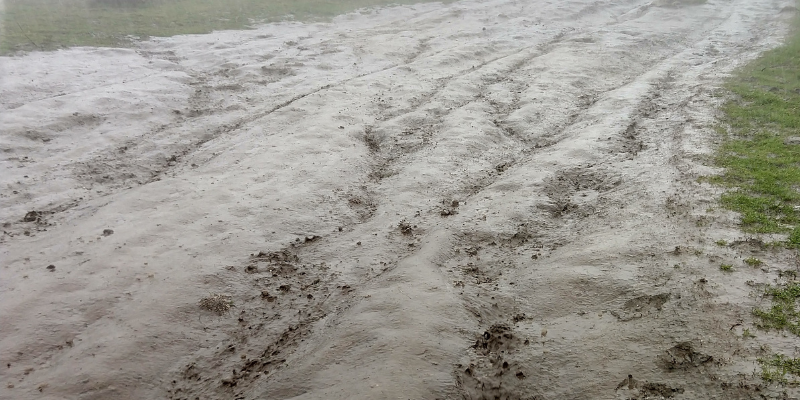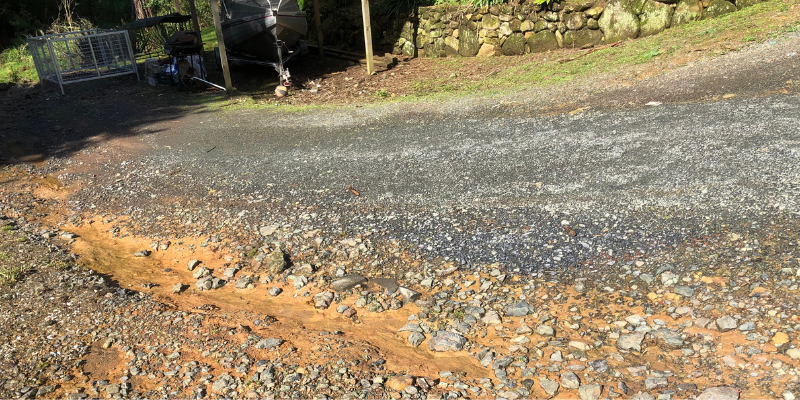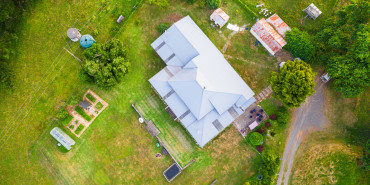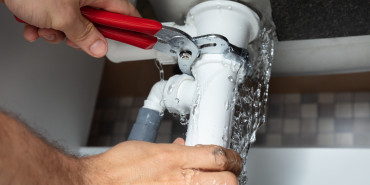Cover for storm, flood, and landslide damage
Cleaning up your property after a severe weather event can be a challenging time. Find out more about what you’re covered for following a storm, flood or landslide, and how we can contribute to the cost of clean-up to some of your land.
If your home insurance policy includes fire insurance (and most do) then you have EQCover. The premium you pay your insurer includes the EQC levy, which gives you access to natural hazards insurance cover.
In the event your home or land has been damaged by a storm, flood, or landslide, you should contact your insurer to make a claim. They will assess and manage your claim from start to finish, including the natural hazard cover portion on our behalf. Your insurer is your single point of contact and can answer any questions you have.
If your insurer does not partner with us, you want to discuss a claim made for damage that happened before 30 June 2021, or you are a Direct EQCover customer, please contact us.
Differences in cover for storm, flood and landslide
Following a severe weather event, there are some key differences between cover for landslide (also known as landslip) damage, and for storm and flood damage.
If you are affected by a landslide, EQC Toka Tū Ake provide cover for your home and your land.
If you are affected by a storm or flood, we provide cover for your land only, and your home would be covered by your private insurance. Following a storm or flood we can also help with the cost of cleaning up some part of your land. We can’t reimburse you for work you do yourself, but we can contribute to costs you might incur.
Land cover for storm and flooding damage
If your property is damaged by storm or flood, any cover for damage to your home is agree on through your private insurance policy. EQC Toka Tū Ake provide cover for certain areas of land under and around your insured home.
We provide some cover for damage to the land:
- under your home
- under certain insured separate buildings, such as sheds or garages
- within 8 metres of your home and separate buildings
- under or supporting your main access way, for example under your driveway, up to 60 metres from your home.
Any land outside of these areas is not insured.
We also provide limited cover for:
- bridges and culverts that are located on your insured areas of land.
- some retaining walls that support or protect your home, separate buildings, and insured land if they are within 60 meters of your home.
We can help with the cost of cleaning up your land
As a part of your land claim, we can contribute to the cost of cleaning up the insured parts of your land.
We contribute to the costs of:
- removal of silt that is 15mm or deeper
- removal of debris
- repairing land scour (when the surface of land is washed away).
There is a maximum amount we can pay towards damage to your land including clean up, called the land cap. We can’t pay you for any work you do to clean up your land yourself.
Our natural hazards insurance doesn’t cover artificial surfaces such as driveway surfacing, paving or concrete. However, these maybe covered by your private insurance policy, and we encourage you to talk to your insurer to understand what you’re covered for.
After a storm or flood, you may be left with a build-up of silt or storm debris on your land. As a part of your settlement we can contribute towards the costs to remove this from your insured land, but we are unable to pay you for any work you do yourself.
Silt build-up is often left behind after flooding and is made up of very fine particles that may be slippery when wet. If the buildup of silt on your land is more than 15 mm, it may need to be removed. We can contribute towards the cost of removing it off the insured parts of your land, including under your home, up to the land cap.
If the buildup of silt is less than 15 mm deep, you don’t usually need to remove it. The silt should disappear on its own within a few weeks and grass will regrow quite quickly.
You might also be left with debris such as rocks, fallen trees, broken fences, and other items that have been swept onto your property. As part of your settlement, we can contribute to the cost of removing debris from the insured parts of your land up to the land cap.

A build up of silt left on grass after flood
Land scour happens when the surface of land is washed away by flowing water. This often affects areas such as driveways. We can contribute to the cost of repairing land scour on your insured land as a part of your settlement , up to the land cap.
The way land scour is repaired will depend on the damage to your property. It can often be repaired with coarse inorganic fill, such as gravel.

Land scour on a driveway
Cover for landslide damage
If your property is damaged by a landslide (also known as a landslip), we provide the first layer of cover for your home, and cover for certain areas of land under and around your home.
There is a maximum amount that we can pay for damage to your home, called the building cap. This is generally $300,000 plus GST. Any cover over this amount is provided by your private insurance policy.
New Zealand is one of the few countries in the world to have natural disaster insurance that covers certain areas of land under and around your home. This includes limited cover for certain retaining walls, bridges and culverts that are on these parts of your land.
The land cover that we provide is limited and may not be enough to fully repair the damage to your property. It’s important that you know which parts of your land are included, and what is not covered.
Insurance claims for damage from landslides are often complex and take time to resolve. If you would like an update on your claim, please talk to your insurer to understand where they are at in the process.
Read more about cover for your home and land, including how much you are covered for on our About EQCover page


